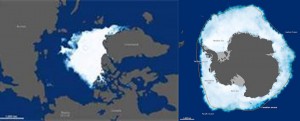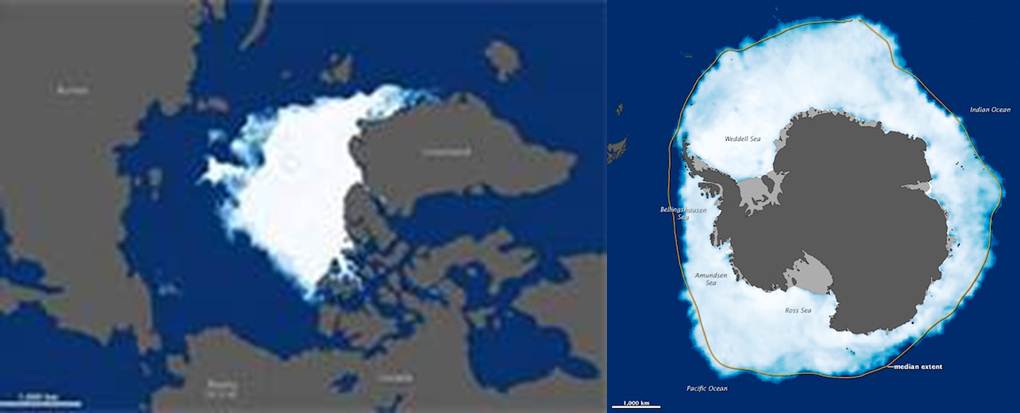In 2012 we witnessed the largest polar sea ice melt in the Arctic ever recorded. At the same time Antarctic sea ice grew at record levels. What the heck is going on? How can growing sea ice in the Antarctic be happening when Arctic sea ice is shrinking?
The actual numbers:
- Arctic Ocean sea ice minimum was 3.61 million square kilometers (1.39 million square miles).
- Antarctic Ocean sea ice maximum was 19.44 million square kilometers (7.51 million square miles).
For climate change skeptics the Antarctic statistics support their belief that global warming is nonsense while Arctic results give global warming champions the smoking gun evidence that something needs to be done by all of us.
Sorry to disappoint the skeptics but geography plays a key role in the differing results at the two poles. The Arctic is far more susceptible to global warming than the Antarctic because the Arctic is a sea surrounded by land whereas the Antarctic is an isolated continent surrounded by sea. These two opposite features play a significant role in why one has shrinking ice while the other continues to see the growth in sea ice. Air currents and ocean currents are very different at our two poles. Warming continents impact the Arctic raising surface temperatures and the air above. As summer sea ice melts more ocean is exposed absorbing heat rather than reflecting it back into space. As a result the Arctic is experiencing the global heating effect much more than its polar opposite.
The Antarctic has been an isolated continent at the southern pole for 30 million years. Surrounded by cold ocean currents, uninfluenced by the warming of other land masses in its isolated state, and battered by unimpeded sea winds, it is a natural refrigerator that reinforces the cooling of the ocean surfaces that surround it. The ozone hole over the Antarctic may be contributing to this cooling as well affecting ultraviolet light absorption which in turn impacts atmospheric circulation contributing to cooling over the southern pole.
So while the thermometer rises over most of the continents and oceans of the planet the Antarctic, in isolation, remains in a deep freeze. Scientists, however, project that this lag by the Antarctic will come to an end before the close of the 21st century if we continue to see the Earth continue to heat up.









